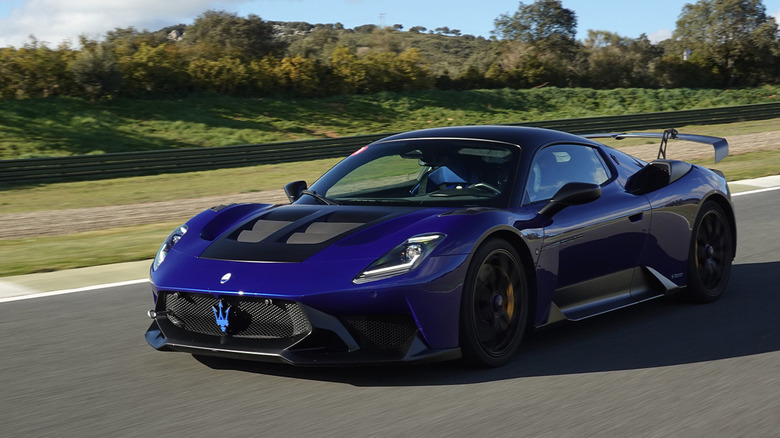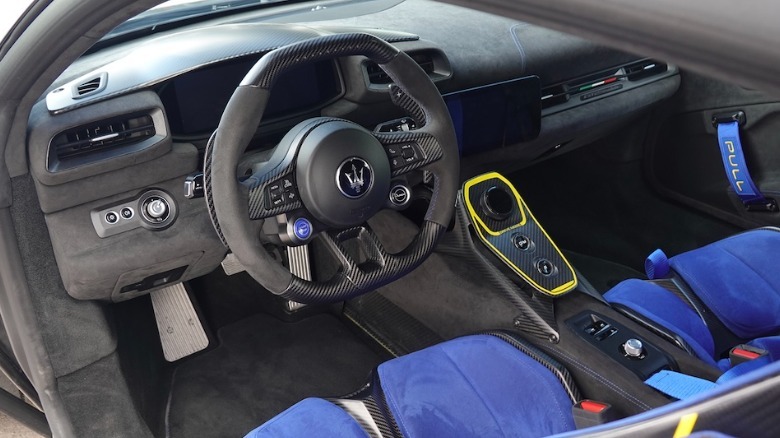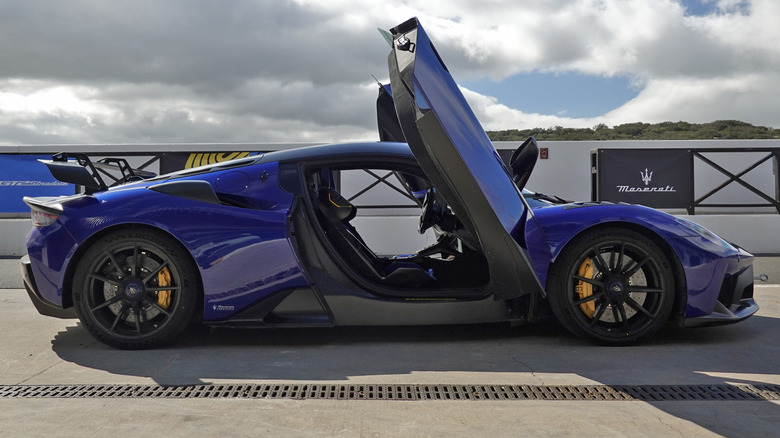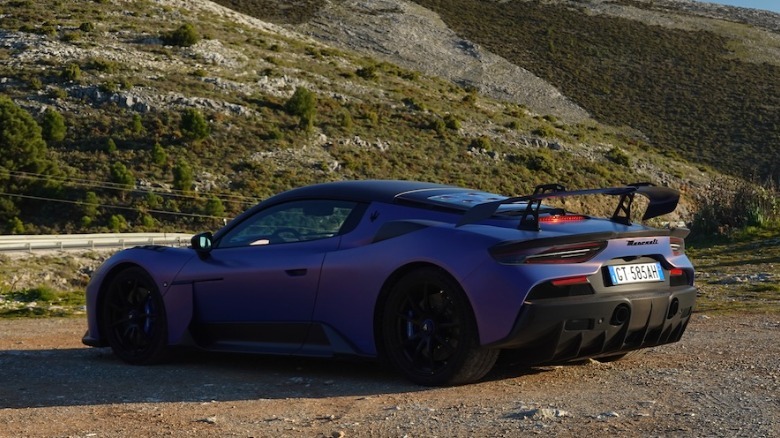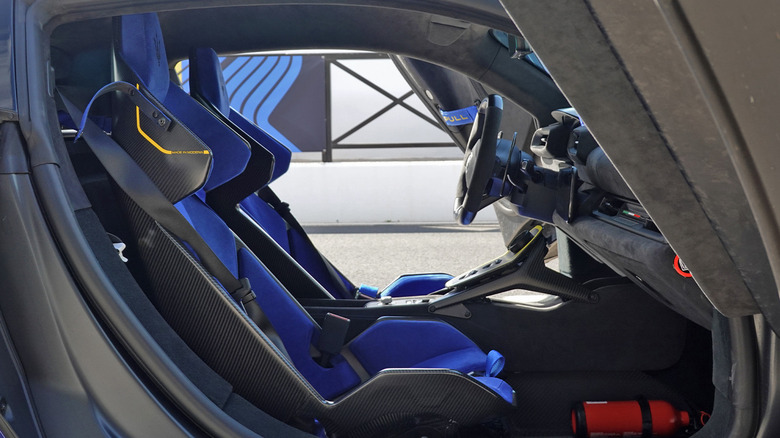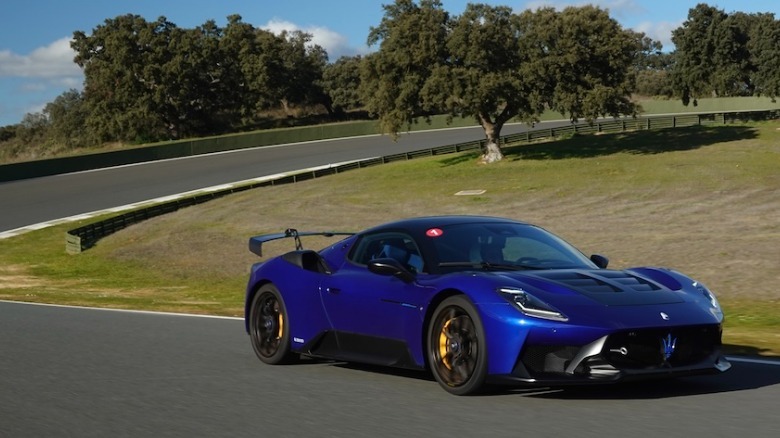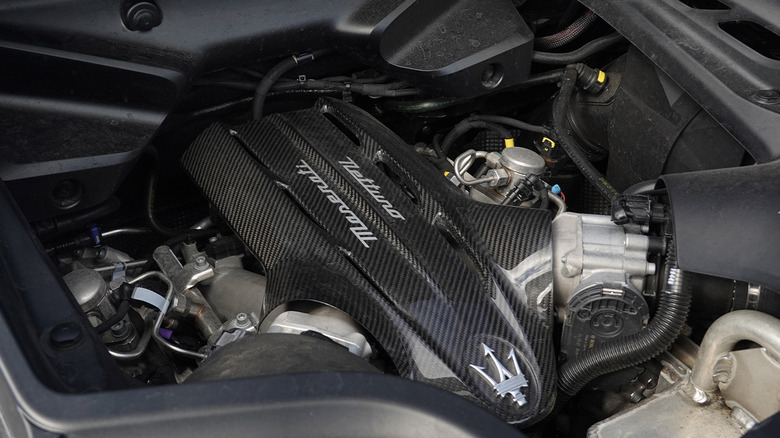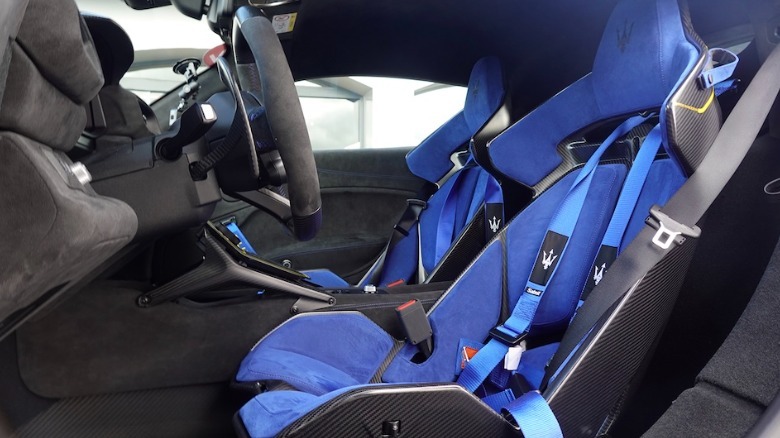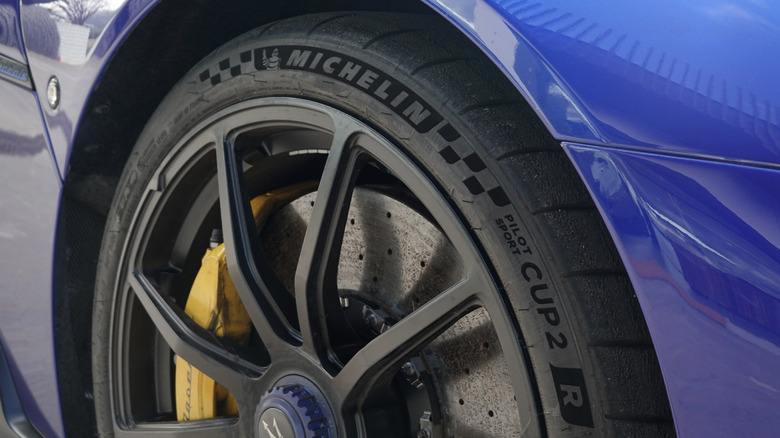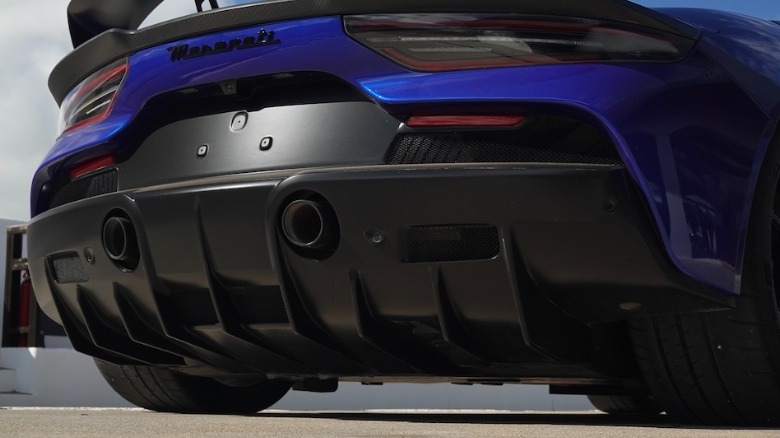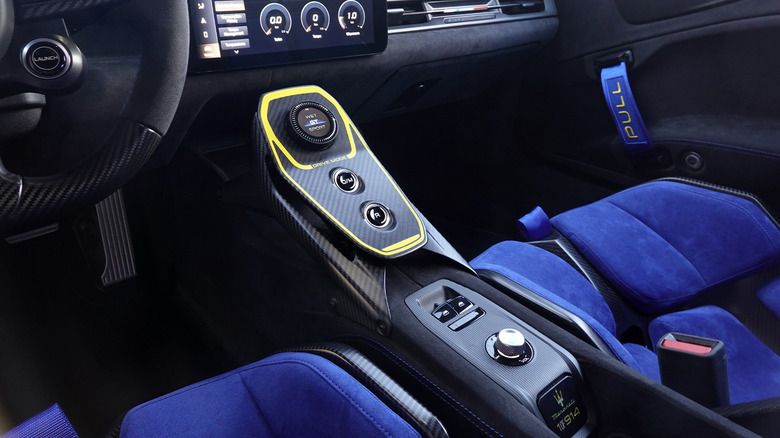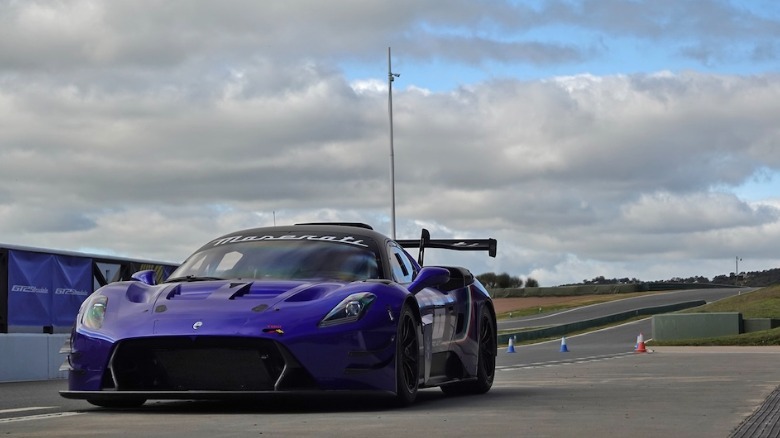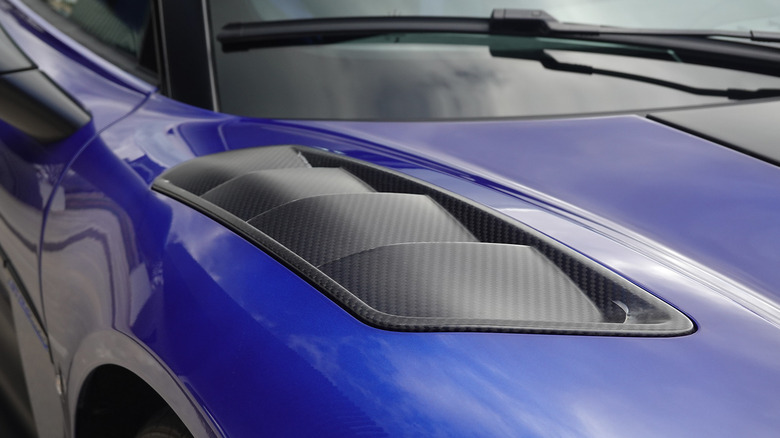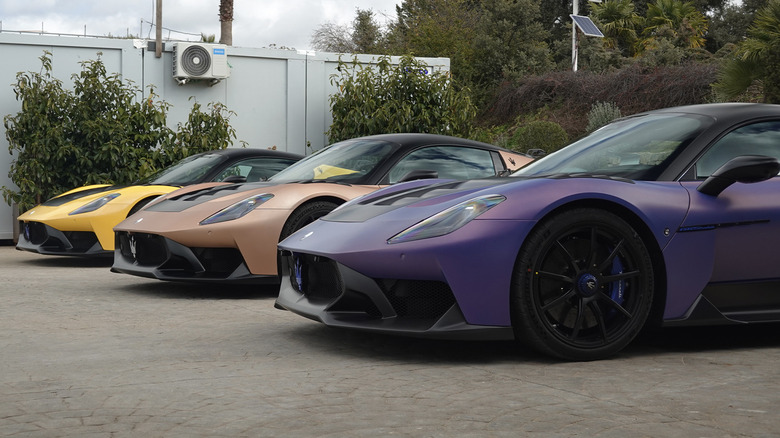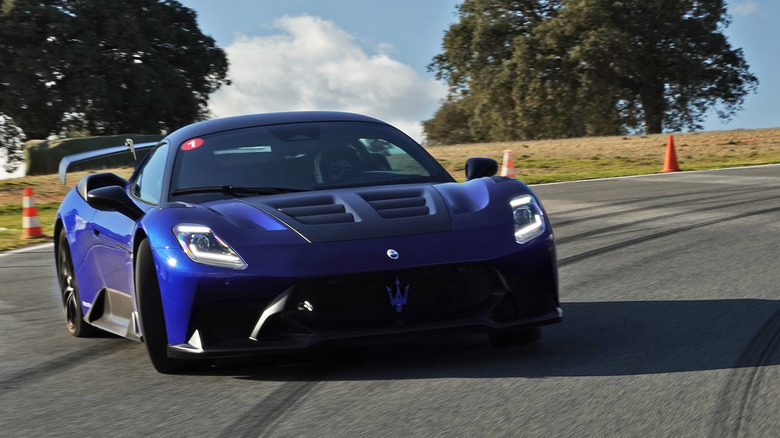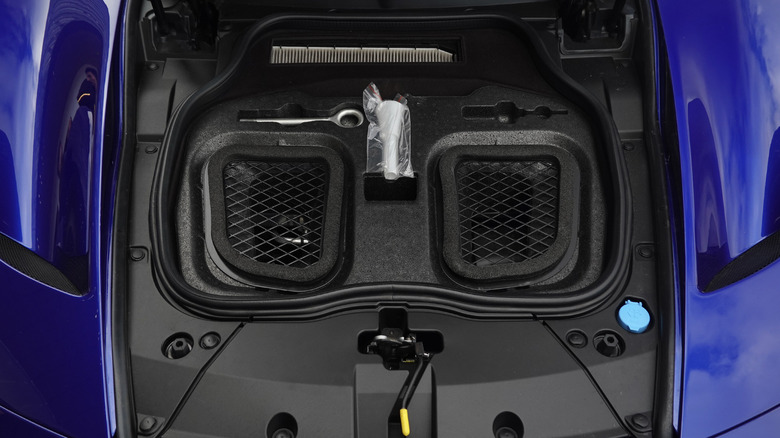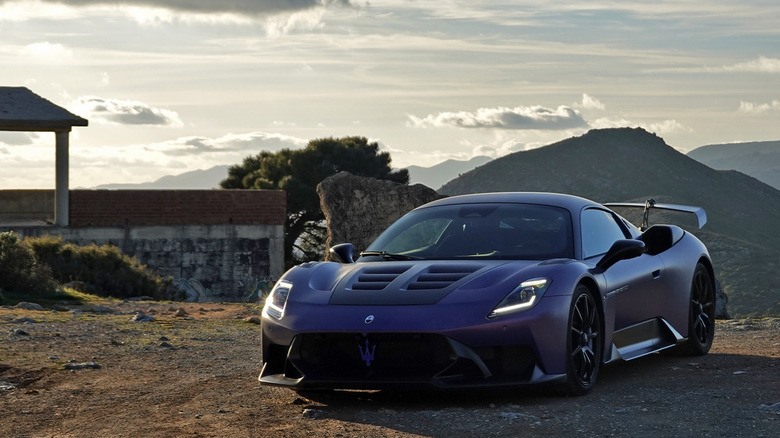2025 Maserati GT2 Stradale First Drive: Fun & Frustration From This Porsche GT3 Rival
Last summer at Monterey Car Week, Maserati unveiled the new GT2 Stradale as the most hardcore road-legal version of the MC20, a supercar I truly love and root for despite undeniable flaws. Crazy turbos on a raucous "Nettuno" V6 engine that rides low in a carbon-fiber monocoque chassis, the MC20 and its "Cielo" hardtop convertible variant both look the part of an exotic Italian thoroughbred.
The GT2 Stradale doubles down on that recipe, with weight savings paired to aggressive aerodynamics, more power, and a surprising suite of track settings—all of which contributes, of course, to a higher price and a limited production run. To justify the hype, Maserati invited a cadre (some might say a cabal) of international journalists to Ascari Circuit, in Spain, for testing on track and public roads alike.
The private track at Ascari, simultaneously intricate and immaculate, should have set the perfect stage for the exclusive launch of a car that hopes to target Porsche's stalwart GT3 and GT4 RS track toys. Unfortunately, flying me and my cohort halfway around the planet for just 20 minutes of track time and 30 minutes on mountain roads doesn't suggest a ton of confidence from Maserati in this new MC20 variant, given well-known reliability concerns. And limited time behind the wheel admittedly makes a serious review, rather than impressionistic intimations of performance and panache, somewhat hard to accurately ferment as I type on a commuter jet at 7 AM flying 30,000 feet over the Iberian Peninsula.
An introduction at Ascari
The Stradale sure looks the business. Additional strakes and a wider front splitter, side skirts, larger intakes, and the big wing over a rear diffuser all set off the MC20's more restrained, refined forms. Think of the GT3 RS versus a Touring, though, and Maserati's cosmetic differences rein in some of the more excessive exuberances. Not that such angular and aggressive enhancements look bad in the context of a racetrack, but I wondered how the almost-radical redesign might compare to European hatchbacks and minivans once out on public roads.
But first, a first couple of laps at Ascari, where a pro driver took the GT2 out slowly, pointing out tricky sections along the 3.3 mile track. He then pushed maybe six or seven-tenths for one lap, braking gently and cornering modestly, hitting full throttle only on the straightest of straights.
Meanwhile, from the passenger seat, I rode at least two or three inches higher because only the driver's seat allows up and down adjustment (to save precious pounds, obviously). I spent some of the slower sections taking a glance around the cockpit, still such a clean and simple design that arguably improves over the base cars with a new center console.
A comfortable cockpit for racing
Soon enough, my turn for a first stint arrived and I climbed into the driver's seat. I fit just fine at 6'1" with long limbs, plus an XL Sparco helmet and hair net. An optional set of harnesses required some finagling to adjust properly, though, and certain wry remembrances of the Stradale's Stellantis roots started to flit through my mind. A pop of the right column-mounted shift paddle and I pulled up the gentle hill and filtered onto the track.
And then proceeded to just about blow turn one on my first lap because the brakes worked so badly. I recovered by whipping the lightly assisted steering wheel hard to the left, and the Stradale simply cornered down a lefthander without so much as a peep from the Michelin Pilot Sport Cup 2 R tires. Right, I immediately remembered, this 132-pound lighter mid-engine supercar can probably handle a fair amount of abuse.
Brake-by-wire deficiencies
Through a few mild sweepers, right foot planted into the floor to unleash every last of the 631 horsepower, a modest exhaust note reverberated through the cockpit. I missed some of the turbo whoosh and blowoff that the road-going MC20 coupe, especially, transmits straight into the driver's brain—and yet, the Stradale's burble never reached anything near a brash banshee wail. Instead, this first lap simply left me wondering where to find the engagement that might justify a starting pricetag of $310,000 (plus destination, of course).
The brakes never worked properly, the light steering provided zero feedback of either grip or weight, and the soft suspension let me dip the nose hard enough to scrape the revised front carbon splitter at multiple dips and rises. Most of all, the brakes concerned me. The pedal simply lacked any bite for at least a half-inch of initial travel, then turned rock hard with full resistance. In fairness, I then reached ABS threshold chatter quite quickly (and experienced no fade, possibly due to both larger diameter and thicker rotors).
Distraction factor setting in
But the pedal worked more like an on-off switch, a concern specifically given that brake-by-wire programming gives me nightmares of software glitches. The code here seemed to prioritize matching the weight of a McLaren, yet lacked any semblance of the precision that might make trail braking with finesse at all possible.
I hopped out after my four laps, the last half of which I spent rolling through corners to cool the engine and brakes. In an effort to stay positive I tried to focus on the light monocoque, which tinkles with the quintessential racecar sound of sprayed pebbles throughout each lap. By the end of that stint I started holding far more lateral grip than expected, until the Cup 2 R tires began to protest with mild squeals on a cold, often cloudy day. But I never noticed any moment of oversteer or understeer, so I vowed to push harder the next time out.
Starting to get dialed in
Then everything changed in Corsa mode. Sure, I knew the track a little better, which always helps. But Corsa firms up the steering wheel, which in some cars creates dull resistance rather than actual communicativeness. Not here, as the carbon flat-bottom wheel began to actually dance with the chassis. And even the brake-by-wire calibration changes, a slight relief even if the pedal still fell short of expectations.
Pushing harder, the traction and stability control interventions obviously took a step back. I found some typical mid-engined tail squiggle under hard braking, the nose still scraping a bit—not on curbs, but moreso on the transitions from uphills or dipping down into Ascari's pair of lefthand bowls. Given my struggles trail braking, understeer also entered the conversation. Maybe the relatively tame 245-millimeter front tires, versus 305-millimeter rears, contributed to the shove, but I also transitioned easily into the oversteer tendencies that I expected after my road experiences in the MC20 coupe and Cielo.
Turbo torque versus high-end horsepower
Maserati's pro driver urged me to keep my revs even lower and lower. And the Nettuno's turbos certainly provided plenty of shove from low revs, so I routinely short-shifted after horsepower stopped swelling and appeared to peter out around 5,500 or 6,000 RPM. The prospect of bolting on a forthcoming titanium exhaust setup, which deletes both cats and swaps in a smaller particle filter, might open up the engine a bit more at the upper revs.
At the very least, the auditory experience should improve significantly, preventing me from relying on my seat dyno and instead helping me keep an ear on the engine's output rather than an eye on those functionally useless—though cool looking—shift lights integrated into the steering wheel.
Drive modes to explore, but not now
To stave off a growing mutiny, Maserati conceded to two additional laps for each driver than the originally planned eight. This time, without a pro in the passenger seat, which meant I could finally focus without someone chattering in my ear. Again in Corsa, my pace and line improved, as I braked later and cornered harder for a couple of minutes before the big exhale and final cooldown corners. At the very least, I at least climbed out feeling a little better about my own performance, even if I can't exactly say I ever felt fully confident in the car.
After the scant 10 laps, I cornered an engineer to ask critical questions about springs and dampers and sway bars and carbon layup—but instead received a primer on the Stradale's features, including how to adjust the shock dampers and driver aids within each individual drive mode. Turns out, selecting Corsa doesn't switch the dampers into Firm automatically. Perhaps a Stradale buyer would have read the owner's manual and spotted that, but I couldn't help but wish it'd been pointed out before we were let loose on the track.
Road manners and mannerisms
Given the limited time, in a rush to swap in and out of cars with other drivers, as well as snapping pictures between stints, I never got to fiddle with the adjustments on track. A short 30 minutes or so of driving downhill back to the hotel allowed for a certain amount of experimentation, but the tight confines of a European road revealed the Nettuno's screaming nature more than Ascari's manicured asphalt.
The quick sprint toward the Mediterranean revealed a new side of the Stradale, though. All of a sudden, the soft suspension made more sense, absorbing cracks and bumps in the mountain road without crashes and crunches chiropracting my spine in the surprisingly comfortable bucket seats. What seemed more like a momentum car on track instead ripped and roared through the treesides, chasing down and overtaking slower traffic without a moment's hesitation.
Crawling through Spanish towns, though, the coolant temperature gauge started to creep nervously close to red. That's despite the 15% increased airflow that new front bumper sends over the front radiator–which necessitated deleting the MC20's vestigial front trunk–plus the 20% increase through each upper side intake.
Imitating the Porsche RS recipe
Clearly, the Stradale prefers a bit more pace to keep that air rushing through. I suspect that, with more stints and longer sessions on track, the Stradale may have been able to reveal even more character, as well as more performance, with the body roll reduced and fore and aft dip and dive toned down. After all, Porsche's GT3 RS offers the insane ability to tailor suspension settings, traction and stability intervention, even aerodynamics all on the fly—to the point that in Track mode, a 3 RS can ride softer than in Street mode.
Imitation being the sincerest form of flattery, Maserati's GT2 Stradale clearly requires more fine-tuning to come into its own.
Questionable choices
More time for the carbon-ceramic brakes to wear in might also help. Or a warmer day for the Cup 2 R rubber, and more consistent tire pressure checks. Did I notice a bit of aero coming into play around Ascari's longer straights and softest kinks, where I turned the steering wheel only a micrometer while cornering at over 200 kilometers per hour? Maserati claims the carbon wing, in its most aggressive position, will create up to 500 kilograms of downforce. Maybe, but once again, I struggle to say yay or nay. Likewise to the prospect of somebody actually shelling out at least 25% more for Maserati's GT2 instead of Porsche's GT3, or even a GT4.
At least the Maserati weighs less with more power, but sussing out whether anyone can actually dial in those finer elements of the Stradale would have simply required more than a total of just 20 minutes, including cooldown periods, in a new car on a new track. Even some time driving to the track in a Stradale may well have helped me adjust my sensitivities to the car's undeniably unique character. Instead, as my Air France flight begins to descend, I leave Spain behind with the inkling that despite the racing-inspired looks and motorsport-derived goodies, the new MC20 lives up to the "Stradale" part of its moniker best, given how much more this car seems suited to the road than the track.
